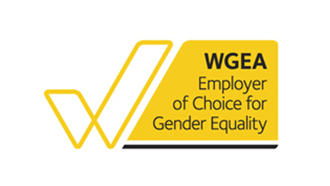- within Government and Public Sector topic(s)
- with Inhouse Counsel
- in United States
- with readers working within the Environment & Waste Management and Retail & Leisure industries
The New South Wales government is leading the charge on seeking to reduce the upfront carbon emissions associated with the delivery of public infrastructure projects in Australia as part of its agenda to achieve net zero emissions by 2050.
The NSW Environmental Protection Authority (NSW EPA) is currently reviewing submissions received in response to its draft Sustainable Construction Protection of the Environment Policy (Sustainable Construction PEP). The Sustainable Construction PEP was released in late 2024 and was publicly exhibited until April 2025. It supports the Decarbonising Infrastructure Delivery Policy (DID Policy) introduced by Infrastructure NSW in April 2024, which imposes mandatory and optional actions for NSW Government agencies to reduce upfront carbon in public infrastructure delivery. The draft Sustainable Construction PEP establishes the reporting and monitoring framework for compliance with the DID Policy.
Following its review of the submissions, the NSW EPA will release a consultation outcomes report with the intention that, once made, the Sustainable Construction PEP will be gazetted and made into law.
As reductions in upfront carbon emissions during construction become the new norm, and demand increases for recycled and low carbon products to support infrastructure delivery, public infrastructure delivery partners, contractors and construction material suppliers should be engaging with these reforms.
Although NSW is the first cab off the rank, it is anticipated that other states and territories will follow suit and implement similar reforms.
Background to upfront carbon
Upfront carbon is the carbon emissions and removals associated with the creation of an asset up to practical completion of construction. It includes the emissions from the production of materials, transportation and the construction process. According to Infrastructure Australia, buildings and infrastructure are directly responsible for almost one third of Australia's total carbon emissions and indirectly responsible for over half of Australia's total carbon emissions.
The Sustainable Construction PEP has been prepared to reduce the carbon footprint of public infrastructure delivery by establishing a reporting and monitoring framework for emissions and preferencing the use of recycled materials in public infrastructure construction (where appropriate).
If enacted, NSW Government agencies will need to comply with the following guides and tools when managing and reporting on upfront carbon emissions for projects captured by the DID Policy:
- The Sustainable
Construction PEP – Reporting Guidance (December 2024,
EPA) (Reporting Guidance) (once finalised)
- Embodied Carbon
Measurement for Infrastructure – Technical Guidance
(April 2024, Infrastructure NSW) (Measurement Technical
Guide)
- Decarbonising Infrastructure Delivery – Guidance Note: Selecting Carbon Tools and Data Sources (March 2025, Infrastructure NSW) (Measurement Guidance Note).
Draft Sustainable Construction PEP
The draft Sustainable Construction PEP requires public infrastructure projects with a newly initiated business case to comply with the PEP's requirements if the project or program has an estimated development cost of:
- over $50 million for building sector projects
(e.g. schools, hospitals, prisons, and other structures); or
- over $100 million for all other infrastructure projects (e.g. roads, rail, bridges and dams).
It requires agencies to:
- report the quantity of 'upfront carbon' impact and the
use of recycled materials in public infrastructure projects to the
NSW EPA; and
- preference the use of recycled materials in public infrastructure projects on an 'if not, why not' basis (that is, 'where there is no significant additional cost or negative impact on performance or the environment').
The draft Sustainable Construction PEP (Appendix B) outlines the mandatory and optional actions under the DID Policy that agencies will need to satisfy when considering and quantifying the management of upfront carbon for each project stage. Agencies must then report information to the NSW EPA in accordance with the applicable reporting and technical guidance at the following stages of project delivery:
- business case;
- planning approval, design and procurement; and
- construction and practical completion.
Measurement and reporting guidelines
The measurement and reporting of the Upfront Carbon Requirements
to the NSW EPA will need to be undertaken in accordance with the Measurement Guidance
(and Measurement Guidance
Note) and Reporting Guidance
(currently in draft).
The Measurement Guidance specifies minimum expectations for carbon
measurement by providing common methodology, assumptions,
approaches to data use and methods of reporting. It directs
agencies to the most appropriate measurement and management tool or
database for each project stage. The draft Reporting Guidance will
then govern the information to be provided to the NSW EPA based on
the mandatory actions of the DID Policy at any given stage of the
project.
Further details of some key obligations from the draft Sustainable
Construction PEP and DID Policy for each project stage are outlined
below.
Business case (Stage 1)
As part of business case development, it is recommended that agencies engage with the market to test decarbonisation opportunities, including low-carbon initiatives through materials, structure and construction methods.
Agencies will need to provide a Carbon Management Plan (CMP) as part of the final business case for a project.
The business case must include estimates of the upfront carbon associated with any considered project option, with the CMP including the results of carbon quantification for the selected preferred project option.
The NSW EPA will review CMPs to sense-check content and completeness.
The DID Policy (Appendix 1) provides a useful summary of design initiatives for the development of project options to reduce upfront carbon emissions. These include:
- preferencing sites with infrastructure that can be
reused/repurposed to avoid demolition (waste) and new construction
(necessitating the use of new materials);
- optimising the vertical and horizonal alignment of linear
infrastructure to reduce the amount of materials and extent of
earthworks and to optimise drainage/bridges; and
- switching materials by considering low-carbon materials such as timber, recycled alternatives such as crushed glass for sand, and opting for products with third party certification (such as Climate Active, Environmental Product Declaration, Aluminium Stewardship, ResponsibleSteel").
Planning approval, design and procurement (Stage 2)
During this stage, agencies must report on how they will preference the use of recycled materials where there is no significant additional cost or negative impact on performance or the environment from doing so. 'If not, why not' explanations will be required if recycled materials preferencing is not proposed.
Agencies will also be required to provide an updated CMP during this project stage, unless carbon estimates have already been disclosed for the project in accordance with the State Environmental Planning Policy (Sustainable Buildings) 2022. Carbon calculations must use design development, quantity surveyors or more detailed cost estimation, and should cover a minimum of 80% of materials and 80% of construction activities. Again, the NSW EPA will review updated CMPs and, if needed, carry out analysis of the information contained in those plans.
As part of procurement requirements, agencies will also be required to include contractual performance requirements for contractors to provide as-built data to enable reporting on upfront carbon in accordance with the Measurement Guidance.
Construction and practical completion (Stage 3)
Agencies will need to provide detailed reporting and supporting calculations to demonstrate the total upfront carbon during construction. Data is to be reported annually during construction and at practical completion of the project.
Key activities such as material use for major elements (recycled and non-recycled), construction energy use and construction waste will need to be tracked to provide carbon measurements from actual data. Where actual data is not available, then the latest available design estimates can be used.
The NSW EPA and Infrastructure NSW will analyse a project's Stage 3 as-built data in conjunction with its Stage 2 upfront carbon estimates to determine whether Stage 2 estimation methodologies are accurate and/or low carbon designs are being achieved. The NSW EPA will also report publicly on upfront emissions of completed projects.
Next steps for public infrastructure delivery partners and materials suppliers
Those in the private sector seeking to tender for the design and/or construction of NSW Government infrastructure projects need to familiarise themselves with these policy developments.
Manufacturers and suppliers of materials should also consider and respond to the new push for preferencing the use of recycled materials and the expected increase in market demand for such materials.
The proposed NSW reforms present a timely reminder for public infrastructure delivery partners to review their internal processes including to:
- assess organisational dependencies on carbon-intensive inputs
for project delivery;
- engage with procurement teams to identify opportunities to
reduce carbon emissions and promote the use of recycled products in
supply chains;
- develop low carbon options for project delivery (e.g.
materials, structures and on-site emissions) that can be readily
incorporated into government tenders; and
- review existing measurement and data collection capabilities to determine whether they will be able to meet proposed reporting requirements.
The content of this article is intended to provide a general guide to the subject matter. Specialist advice should be sought about your specific circumstances.
 |
 |
| Lawyers Weekly Law firm of the year
2021 |
Employer of Choice for Gender Equality
(WGEA) |




